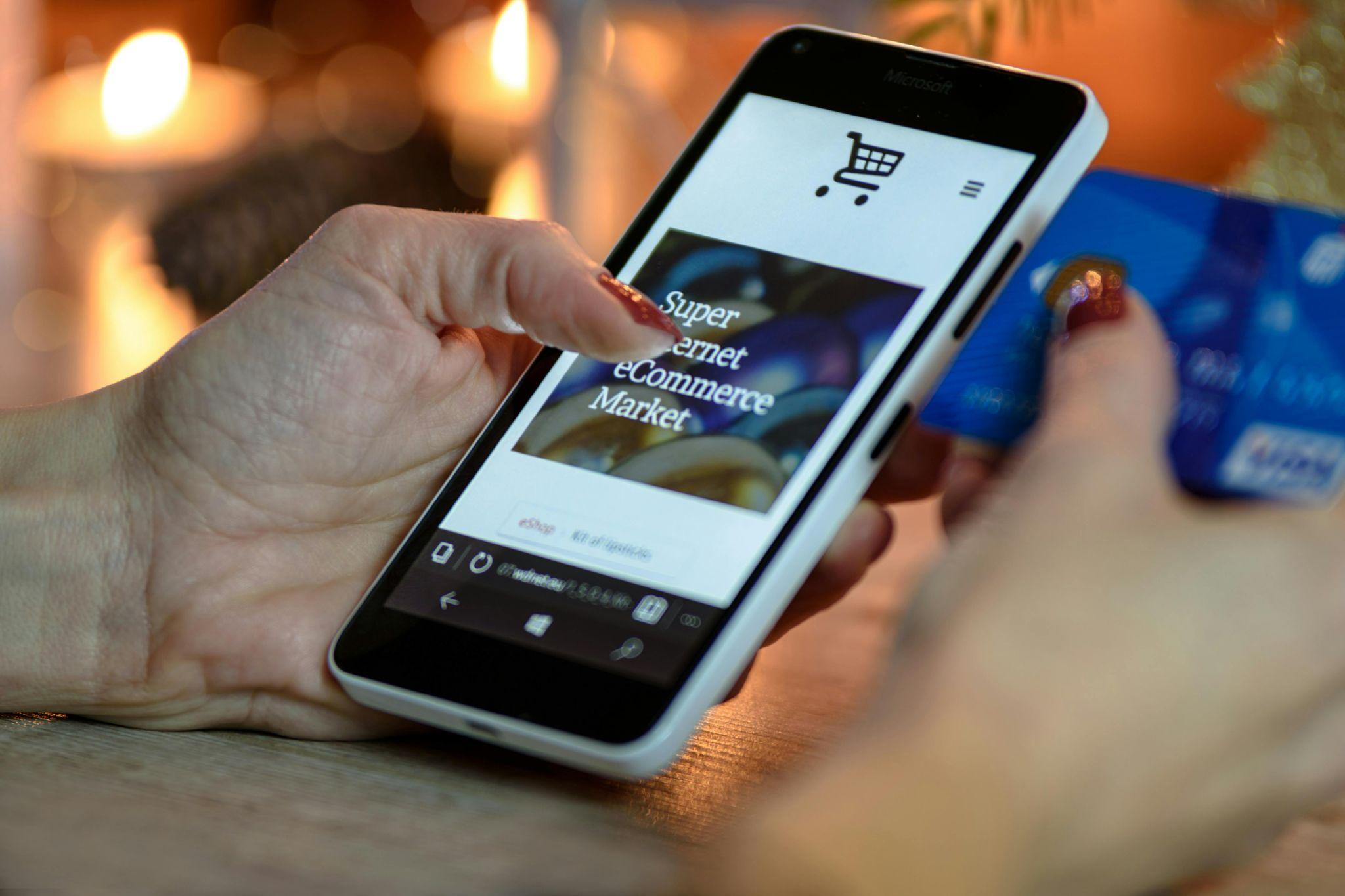
Public Wi-Fi networks have become ubiquitous in coffee shops, airports, hotels, and shopping centers, making internet access convenient for millions of users worldwide. With the explosive growth of mobile commerce, consumers increasingly rely on these networks to browse, compare prices, and make purchases on their smartphones and tablets.
However, using public Wi-Fi for online shopping poses significant security risks that can compromise your financial data and personal privacy. According to cybersecurity experts, unsecured public networks are prime hunting grounds for cybercriminals seeking to intercept sensitive information during online transactions. This comprehensive guide explores the critical vulnerabilities associated with public Wi-Fi shopping and provides essential strategies to protect yourself from potential threats.
Understanding Public Wi-Fi Risks for Online Shopping
Public Wi-Fi networks operate fundamentally differently from your secure home network, creating numerous entry points for malicious actors. Unlike private networks that require authentication and employ robust encryption protocols, most public hotspots prioritize accessibility over security, often transmitting data in an unencrypted format that can be easily intercepted. The shared nature of these networks means that multiple users connect to the same access point, creating opportunities for cybercriminals to position themselves between you and the network infrastructure to capture your sensitive information.
Common Security Threats on Public Wi-Fi
The landscape of public Wi-Fi security threats encompasses various sophisticated attack methods designed to steal your personal and financial information:
- Man-in-the-Middle (MITM) Attacks: Hackers position themselves between your device and the Wi-Fi router, intercepting all data transmitted during your browsing session
- Data Interception: Criminals use packet-sniffing tools to capture unencrypted data flowing across the network, including login credentials and payment information
- Evil Twin Networks: Fraudulent hotspots that mimic legitimate networks, tricking users into connecting to hacker-controlled access points
- Session Hijacking: Attackers steal session cookies to impersonate users and gain unauthorized access to shopping accounts and payment platforms
- Malware Distribution: Compromised networks can inject malicious software into your device, enabling long-term data theft and system control
How Hackers Exploit Public Wi-Fi
Cybercriminals employ systematic approaches to exploit public Wi-Fi vulnerabilities and target unsuspecting online shoppers through carefully orchestrated attack sequences:
- Network Reconnaissance: Hackers scan for vulnerable public Wi-Fi networks with weak security protocols or no encryption
- Access Point Compromise: Criminals either hack legitimate hotspots or create convincing fake networks to lure potential victims
- Traffic Monitoring: Using specialized software, attackers monitor all network traffic to identify valuable data transmissions
- Data Extraction: Hackers capture login credentials, credit card numbers, and personal information during online shopping sessions
- Credential Testing: Stolen information is immediately tested on various platforms to maximize financial gain before victims discover the breach
The Specific Risks to Your Financial Data and Privacy
Online shopping on public Wi-Fi exposes your most sensitive information to unprecedented levels of risk, particularly your financial credentials and personal identifying information. The unencrypted nature of most public networks means that every keystroke, form submission, and data transfer can potentially be monitored and captured by malicious actors. Your financial data privacy becomes critically vulnerable the moment you enter payment information or access banking services over these unsecured connections.
Types of Data Vulnerable on Public Wi-Fi
| Data Category | Examples | Associated Risks |
|---|---|---|
| Financial Information | Credit card numbers, bank account details, PayPal credentials | Unauthorized transactions, account drainage, credit fraud |
| Authentication Data | Usernames, passwords, security questions | Account takeover, identity impersonation, data manipulation |
| Personal Identifiers | Social Security numbers, addresses, phone numbers | Identity theft, synthetic identity creation, targeted phishing |
| Shopping Behavior | Purchase history, browsing patterns, wish lists | Targeted scams, price manipulation, privacy invasion |
| Communication Data | Emails, messages, contact lists | Social engineering attacks, relationship exploitation, business espionage |
Consequences of Data Theft from Public Wi-Fi
The aftermath of data theft from public Wi-Fi can create long-lasting financial and personal complications that extend far beyond the initial security breach:
- Financial Identity Theft: Criminals use stolen information to open new accounts, apply for loans, or make unauthorized purchases in your name
- Credit Score Damage: Fraudulent activities can severely impact your credit rating, affecting future loan applications and financial opportunities
- Account Compromise: Hackers gain access to existing shopping accounts, loyalty programs, and subscription services, leading to unauthorized transactions
- Personal Safety Risks: Stolen personal information can be used for stalking, harassment, or physical threats against you and your family members
- Business Impact: Professional accounts and corporate data accessed during public Wi-Fi shopping can compromise workplace security and client confidentiality
Best Practices to Safely Shop Online Using Public Wi-Fi

Implementing comprehensive security measures significantly reduces your exposure to public Wi-Fi shopping risks while maintaining the convenience of mobile commerce. These proactive strategies create multiple layers of protection that make it exponentially more difficult for cybercriminals to access your sensitive information, even when using potentially compromised networks.
Use of Virtual Private Networks (VPNs)
VPNs for public Wi-Fi security represent the most effective single defense against network-based attacks, creating an encrypted tunnel that protects all your internet traffic from interception and manipulation:
- Military-Grade Encryption: VPNs use advanced encryption protocols to scramble your data, making it unreadable to potential interceptors
- IP Address Masking: Your real location and identity remain hidden from websites, advertisers, and malicious actors monitoring network traffic
- Automatic Kill Switch: Quality VPN services immediately disconnect your internet if the encrypted connection fails, preventing data leaks
- Multi-Platform Protection: Comprehensive VPNs protect all your devices simultaneously, including smartphones, tablets, and laptops
- Global Server Network: Access to worldwide servers ensures optimal connection speeds and bypasses geographical restrictions during shopping
Enable Multi-Factor Authentication (MFA)
Multi-factor authentication provides crucial backup protection by requiring additional verification steps beyond traditional passwords, significantly reducing the impact of credential theft:
- SMS Verification Codes: Text messages containing temporary access codes sent to your registered mobile number
- Authenticator Applications: Specialized apps like Google Authenticator or Authy generate time-based verification codes
- Biometric Authentication: Fingerprint scanners, facial recognition, or voice identification for device-specific verification
- Hardware Security Keys: Physical devices that plug into your computer or connect via Bluetooth for maximum security
- Email Confirmation: Secondary verification sent to a separate email account not accessed during the shopping session
Avoiding Risky Actions on Public Wi-Fi
Certain online activities carry disproportionately high risks when conducted over unsecured public networks, requiring careful consideration and often postponement until secure connections are available:
- Banking Transactions: Never access online banking, transfer funds, or check account balances on public Wi-Fi networks
- Password Management: Avoid accessing password managers or updating login credentials while connected to shared networks
- Sensitive Document Access: Postpone viewing tax returns, medical records, or confidential business documents until you’re on a secure connection
- Social Media Privacy Settings: Don’t modify privacy controls or share personal information that could be intercepted and misused
- Software Downloads: Refrain from downloading apps, updates, or files that could be compromised during transmission
Tools and Technologies to Enhance Online Shopping Security on Public Wi-Fi
Modern technology offers numerous solutions specifically designed to address public Wi-Fi security challenges, ranging from browser-based protections to comprehensive mobile security suites. These tools work synergistically to create robust defense systems that protect your online shopping activities without significantly impacting user experience or convenience.
Secure Browsers and HTTPS
Understanding the difference between secure and insecure web connections is crucial for safe online shopping practices, particularly when using potentially compromised public networks:
| Feature | HTTP (Unsecured) | HTTPS (Secured) |
|---|---|---|
| Data Encryption | None – transmitted in plain text | End-to-end encryption using SSL/TLS protocols |
| Authentication | No server verification | Verified server certificates prevent impersonation |
| Data Integrity | Vulnerable to tampering | Protected against modification during transmission |
| Browser Indicators | No security warnings | Lock icon and green address bar indicate safety |
| Search Engine Ranking | Lower priority in search results | Preferred by search engines for better visibility |
Mobile Security Apps and Firewalls
Comprehensive mobile security applications provide real-time protection against various threats commonly encountered on public Wi-Fi networks, offering automated security features that work continuously in the background:
- Automatic Wi-Fi Security Scanning: Apps that assess network safety before connection and warn about potential threats
- Real-Time Malware Detection: Continuous monitoring for suspicious app behavior and malicious downloads during shopping sessions
- Firewall Protection: Network filtering that blocks unauthorized access attempts and prevents data exfiltration
- Safe Browsing Features: URL filtering and phishing protection specifically designed for mobile shopping experiences
- Privacy Controls: Tools that limit app permissions and prevent unauthorized access to sensitive device information
How to Recognize and Avoid Fake or Unsafe Wi-Fi Networks

Fake Wi-Fi networks have become increasingly sophisticated, often perfectly mimicking legitimate hotspots to deceive unsuspecting users into connecting to hacker-controlled access points. These malicious networks are particularly prevalent in high-traffic areas where people frequently shop online, such as shopping malls, airports, and popular retail districts, making recognition and avoidance skills essential for maintaining your security.
Signs of Fake or Malicious Wi-Fi Networks
Developing the ability to identify suspicious Wi-Fi networks can prevent you from inadvertently connecting to potentially dangerous hotspots designed to steal your information:
- Generic or Misspelled Network Names: Networks with names like “Free WiFi,” “Public Internet,” or slight misspellings of legitimate business names
- Multiple Networks with Similar Names: Several hotspots with variations of the same business name, indicating potential evil twin attacks
- Unusually Strong Signal Strength: Networks broadcasting at maximum power to override legitimate networks and attract more connections
- No Password Protection: Completely open networks in locations where security would typically be expected, such as businesses or hotels
- Frequent Disconnections: Networks that regularly drop connections, potentially indicating unstable or malicious infrastructure
- Unexpected Authentication Pages: Login screens requesting personal information beyond typical terms of service agreements
Steps to Verify Network Legitimacy
Implementing systematic Wi-Fi network verification procedures significantly reduces your risk of connecting to malicious hotspots designed to compromise your online shopping security:
- Ask Staff or Management: Directly inquire about official network names and passwords from authorized personnel at the location
- Check Official Sources: Look for network information on business websites, official apps, or printed materials provided by the establishment
- Verify Network Details: Confirm the exact spelling, capitalization, and security requirements with reliable sources before connecting
- Test Connection Stability: Legitimate networks typically maintain consistent connections without frequent drops or performance issues
- Monitor for Suspicious Behavior: Watch for unexpected redirects, slow loading times, or unusual authentication requirements after connecting
- Use Network Scanning Tools: Employ security apps that can identify potentially malicious networks and warn about security risks
What to Do If You Suspect Your Data Has Been Compromised
Despite taking precautionary measures, data breaches on public Wi-Fi can still occur, making rapid response critical to minimizing potential damage to your financial accounts and personal information. Time is essential in these situations, as cybercriminals often move quickly to exploit stolen data before victims discover the compromise and take protective action.
Immediate Response Actions
When you suspect public Wi-Fi data compromise, implementing these emergency procedures can significantly limit the extent of potential damage and prevent further unauthorized access:
- Disconnect from the Network: Immediately terminate your Wi-Fi connection and switch to cellular data to prevent continued data exposure
- Change All Passwords: Update login credentials for all accounts accessed during the compromised session, starting with financial and shopping accounts
- Contact Financial Institutions: Notify banks and credit card companies about potential unauthorized access to request account monitoring and temporary holds
- Monitor Account Activity: Check all financial accounts, shopping platforms, and subscription services for unusual transactions or modifications
- Enable Account Alerts: Activate real-time notifications for all financial accounts to detect unauthorized activity as it occurs
- Document the Incident: Record details about the suspected compromise, including network names, locations, and timeline for potential law enforcement reports
Long-Term Security Measures
Recovering from data theft requires sustained vigilance and implementation of comprehensive monitoring systems to detect ongoing threats and prevent future compromises. According to the Federal Trade Commission, identity theft can have lasting impacts that require months or years of active management to fully resolve.
- Credit Monitoring Services: Subscribe to comprehensive credit monitoring that tracks changes to your credit reports and alerts you to new accounts or inquiries
- Identity Theft Protection: Consider specialized services that monitor the dark web for your personal information and provide recovery assistance
- Fraud Alerts: Place fraud alerts on your credit files to require additional verification for new account applications
- Regular Security Audits: Periodically review all online accounts, update security settings, and remove unused services that could pose risks
- Enhanced Authentication: Upgrade security measures across all accounts by implementing stronger passwords, multi-factor authentication, and security questions
Conclusion
The convenience of public Wi-Fi for online shopping comes with substantial security risks that require careful consideration and proactive protection measures. From sophisticated man-in-the-middle attacks to convincing fake hotspots, cybercriminals have developed numerous methods to exploit unsecured networks and steal sensitive financial information from unsuspecting shoppers. However, by implementing comprehensive security strategies including VPN usage, multi-factor authentication, and careful network verification, you can significantly reduce your vulnerability while maintaining the flexibility of mobile commerce. Remember that vigilance and preparation are your best defenses against public Wi-Fi threats, and investing in proper security tools and practices will protect both your financial assets and personal privacy in our increasingly connected world.
